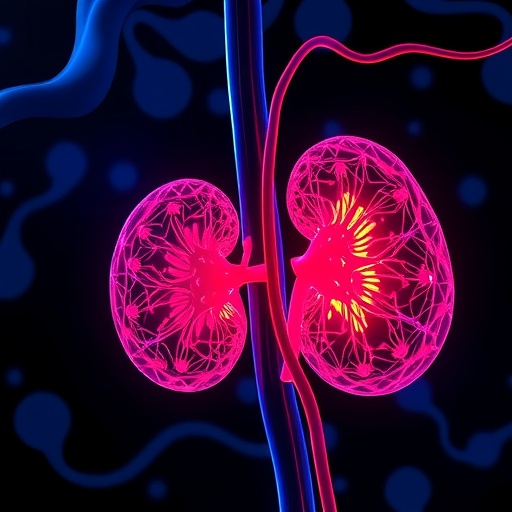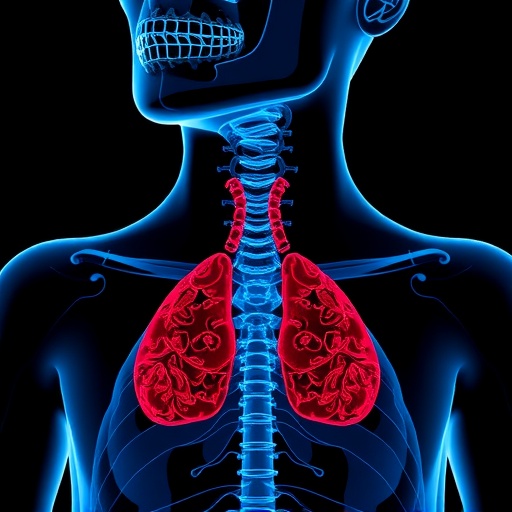
The recent advancements in single-cell sequencing and spatial transcriptomics have revolutionized the field of kidney transplantation, as discussed in a groundbreaking study by Paul, Atkinson, and Malone. This pivotal research sheds light on how these innovative technologies can enhance our understanding of kidney transplant biology, revealing the cellular dynamics and spatial organization of tissues that are often overlooked. By integrating single-cell sequencing and spatial transcriptomics, researchers are now equipped to unravel the complex interactions that occur within the kidney during transplantation.
The importance of kidney transplantation cannot be overstated. Millions of individuals worldwide suffer from end-stage renal disease, and transplantation remains the gold standard for treatment. However, the intricacies of rejection, graft survival, and long-term outcomes are still poorly understood. Traditional methodologies have struggled to capture the heterogeneity present within kidney tissues, often leading to oversimplified models that fail to address the nuances of cellular behavior. This is where single-cell sequencing and spatial transcriptomics come into play, offering a more granular view of kidney function and pathology.
Single-cell sequencing allows for the examination of individual cells within a tissue, providing insights that bulk sequencing cannot provide. By isolating and sequencing the RNA of single cells, researchers can identify distinct cellular phenotypes and states that contribute to the overall biological narrative of kidney transplantation. This technology has enabled scientists to detect rare cell types that may be crucial in the immune response or tissue repair processes, thus opening new avenues for targeted therapies and improved clinical outcomes.
Spatial transcriptomics complements single-cell sequencing by mapping gene expression profiles back to their tissue architecture. This spatial resolution is essential for understanding how cells interact within the complex microenvironment of the kidney. For instance, the study reveals how specific cell populations congregate in areas critical for immune surveillance or tissue regeneration. Such findings can illuminate how certain cellular arrangements may predispose a transplant to rejection or enhance its acceptance.
Furthermore, the integration of these technologies presents several challenges, especially concerning data analysis and interpretation. The sheer volume of data generated requires robust computational tools and expertise in bioinformatics. The authors highlight the need for interdisciplinary collaboration between biologists, clinicians, and data scientists to effectively harness these techniques and translate their findings into clinical practice.
As the research progresses, the implications for patient care in kidney transplantation are vast. A more profound understanding of the cellular interactions at play during and after transplantation could lead to the development of novel immunosuppressive strategies that target specific cellular pathways rather than relying on broad-spectrum medications. This could minimize side effects and improve overall graft survival, leading to better outcomes for patients.
Moreover, the ability to identify biomarkers associated with rejection or tolerance could revolutionize transplant monitoring. Currently, clinicians rely on serum creatinine levels and histological assessments for graft function, which do not always provide a complete picture. Integrating data from single-cell RNA sequencing and spatial transcriptomics could enable the identification of predictive biomarkers that signal impending rejection or graft dysfunction, allowing for timely interventions.
The study also touches on the potential for personalized medicine in kidney transplantation. By understanding the unique cellular landscape of an individual patient’s graft, clinicians could tailor immunosuppressive regimens to preemptively address the specific risks associated with that patient’s cell composition. This personalized approach could significantly reduce the incidence of acute rejection episodes and improve long-term transplant outcomes.
Considering the ethical implications of advanced genomic technologies, the authors stress the importance of responsible research practices. The knowledge gained from single-cell sequencing and spatial transcriptomics must be utilized to enhance patient care while safeguarding patient privacy and consent. As these technologies become more prevalent, establishing guidelines for their application in clinical settings will be paramount to maintain public trust and ensure ethical standards.
As the study by Paul, Atkinson, and Malone progresses, it represents a critical step towards integrating cutting-edge scientific technologies into everyday clinical practice in kidney transplantation. Their work inspires further research endeavors to explore how these innovative methodologies can unravel the complexities of other organs and diseases.
Ultimately, the real-world application of single-cell sequencing and spatial transcriptomics in kidney transplantation could also spur advancements in bioengineering and regenerative medicine. Insights gained from cellular behavior could inform the design of bioartificial kidneys or advanced biomaterials that promote better graft acceptance and function. The prospects are not just limited to transplantation; they reflect a paradigm shift in how we approach the study and treatment of diverse diseases across disciplines.
In conclusion, the study by Paul et al. heralds a new era in kidney transplantation research, emphasizing the transformative potential of single-cell sequencing and spatial transcriptomics. This multidisciplinary approach promises to not only enhance our understanding of kidney biology but also to pioneer novel strategies for improving outcomes in transplantation. As researchers continue to navigate the complexities of the human immune response and tissue dynamics, the future of personalized medicine in transplantation looks incredibly promising.
Subject of Research: Single-cell sequencing and spatial transcriptomics in kidney transplantation.
Article Title: Single Cell Sequencing and Spatial Transcriptomics in Kidney Transplantation.
Article References:
Paul, R.S., Atkinson, C. & Malone, A.F. Single Cell Sequencing and Spatial Transcriptomics in Kidney Transplantation.
Curr Transpl Rep 11, 188–196 (2024). https://doi.org/10.1007/s40472-024-00450-8
Image Credits: AI Generated
DOI: 10.1007/s40472-024-00450-8
Keywords: Single-cell sequencing, spatial transcriptomics, kidney transplantation, graft survival, immunosuppression, personalized medicine, bioinformatics, biomarkers.
Tags: cellular dynamics in kidney tissuescomplexities of kidney graft rejectionend-stage renal disease solutionsheterogeneity in kidney tissuesimproving graft survival ratesinnovations in transplant methodologieskidney transplant biology insightsnuances of cellular behavior in transplantsrevolutionizing organ transplantation techniquessingle-cell sequencing in kidney transplantationspatial transcriptomics advancementsunderstanding renal disease treatment




